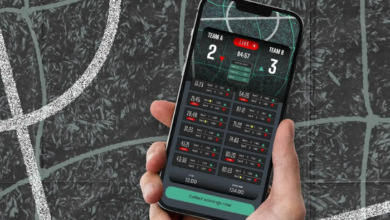Wearable Technology: From Fitness Tracking to Medical Devices

Wearable technology is one of the most exciting and rapidly developing areas of technology. It is transforming the way we interact with the world around us. From fitness trackers to smart watches and even smart glasses, wearable technology is becoming more and more pervasive in our daily lives. This blog post will explore the history and current state of wearable technology, the potential benefits and risks associated with it, as well as the potential applications and future of the technology.
What is Wearable Technology?
Wearable technology is any electronic device or system that can be worn on the body or incorporated into clothing or accessories. It is designed to enhance and improve the user experience. Wearable technology can range from simple, such as fitness trackers and smartwatches, to the more complex, such as augmented reality (AR) and virtual reality (VR) devices. Over the past few years, the market for wearable technology has grown significantly and is projected to reach over $54 billion by 2024.
Overview of the Current Wearable Technology Market
The current wearable technology market is dominated by a few key players. Apple, Samsung, Fitbit, and Garmin are some of the largest and most successful companies in this space. These companies have developed a range of products that are designed to meet the needs of a variety of consumers. From fitness trackers and smartwatches to AR and VR devices, these companies have created products that are both functional and stylish.
Benefits of Wearable Technology
Wearable technology can offer a range of benefits to users. For example, fitness trackers can help users track and monitor their physical activity and health. Smartwatches can provide users with notifications, reminders, and access to their phone’s features without needing to take out their device. AR and VR devices can provide users with an immersive and interactive experience.
Potential Risks and Challenges Associated with Wearable Technology
As with any technology, there are potential risks and challenges associated with wearable technology. Privacy is a major concern, as these devices can collect and store a variety of personal data. In addition, there is the potential for hackers to access this data or manipulate the device’s functionality. Another potential risk is of over-reliance on technology, as users may become too dependent on the device to manage their daily tasks.
Applications of Wearable Technology
Wearable technology has a wide range of potential applications. For example, fitness trackers can help users track and monitor their physical activity, while smartwatches can provide users with notifications and access to their phone’s features. AR and VR devices can provide users with an immersive and interactive experience. Wearable technology can also be used in medical and healthcare applications, such as monitoring patient vitals and providing physicians with real-time feedback.
The Future of Wearable Technology
The future of wearable technology looks bright, with more and more companies investing in the space. Companies are developing more advanced and sophisticated devices that are designed to meet the needs of a variety of users. We are also seeing an increase in the number of applications for wearable technology, from fitness and healthcare to gaming and entertainment.
Conclusion
Wearable technology is an exciting and rapidly developing area of technology that has the potential to revolutionize the way we interact with the world around us. From fitness trackers to smartwatches and even smart glasses, the market for wearable technology is growing rapidly and is projected to reach over $54 billion by 2024. While there are potential risks and challenges associated with this technology, there are also many potential benefits and applications. As technology continues to evolve, it is sure to have a lasting impact on our lives.



